Studying developmental biology in model organisms for later extrapolation to human well-being often requires a toolbox for gene editing. By creating and testing a RNA-guided transposition tool we aimed to introduce a new method for targeted insertions in the marine model Ciona intestinalis, bypassing the need for double-stranded break repair. This tool was developed by fusing the Minos transposase to a dCas9 molecule. We hypothesized that the RNA-guided modality of Cas9 would enable sequestering of the Minos transposase resulting in accumulations of site-directed integrations in a seeming safe harbour locus, M1. Through cloning, we created three plasmids: two containing the fusion protein in distinct configurations, and one solely encoding dCas9. In parallel, sgRNA plasmids have been designed and the tested for their approximate binding ability. Trends of protein expression were observed but both the Sanger sequencing and integration assay had inconsistencies due to non-specificity in the used primers. Therefore, we suggested several adjustments in our experimental design including alternative methods to assess the binding ability of dCas9 and future optimizations. These would enhance this tool’s potential for targeted cargo delivery. This dissertation gives a pipeline and showcases an attempt of RNA-guided transposition in Ciona intestinalis.
promotor/supervisor feedback
nothing yet




